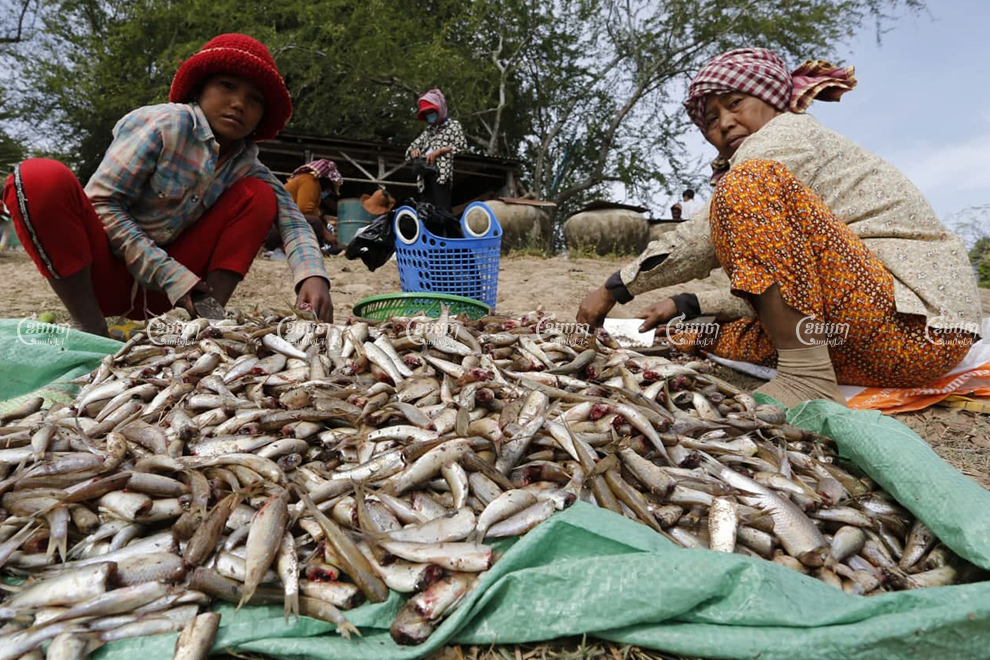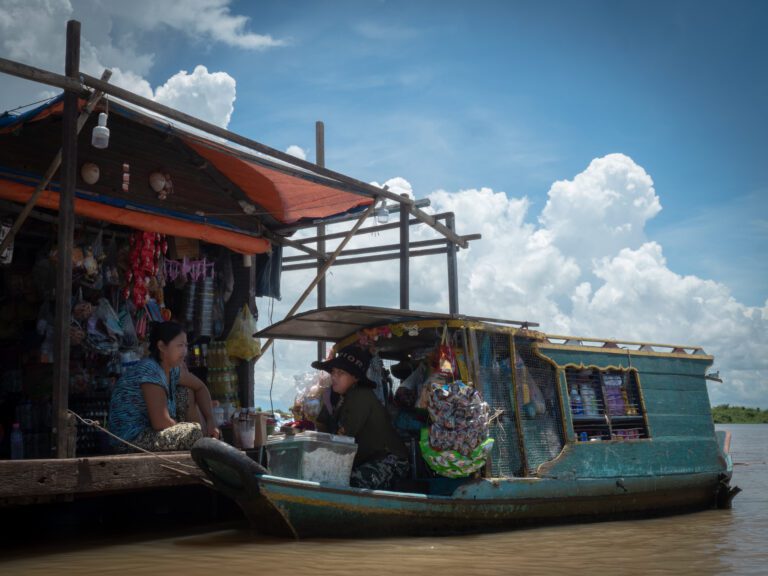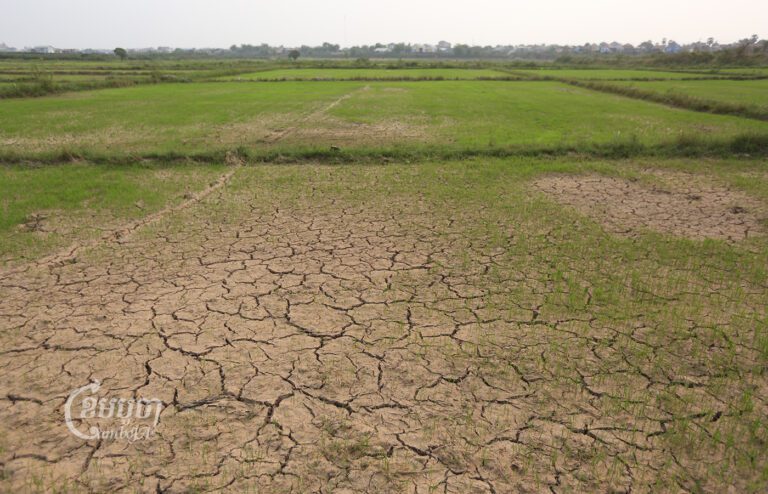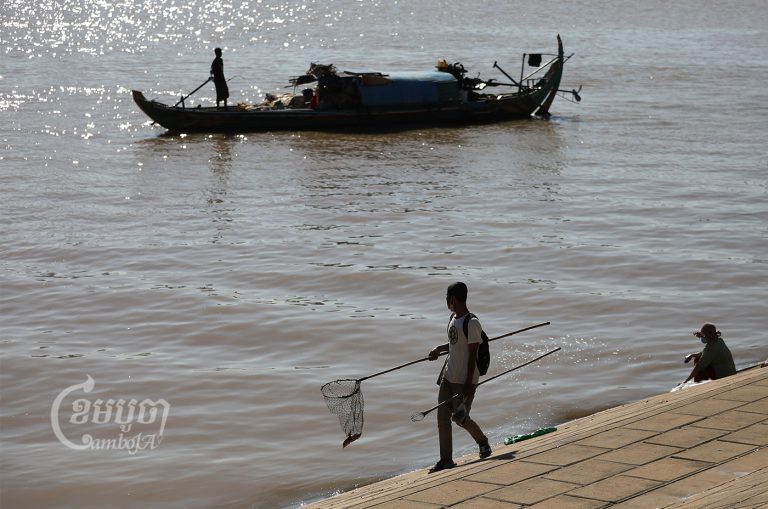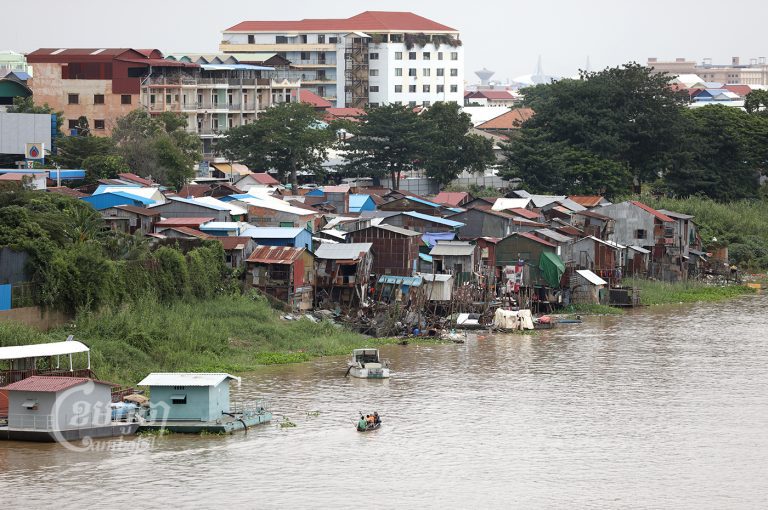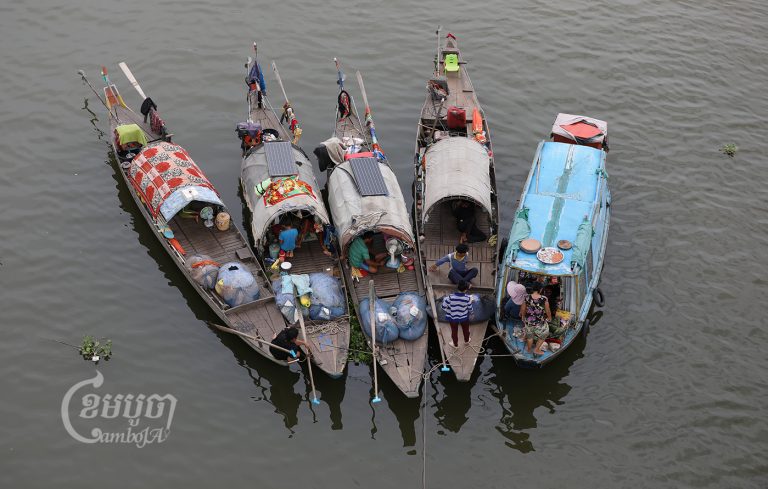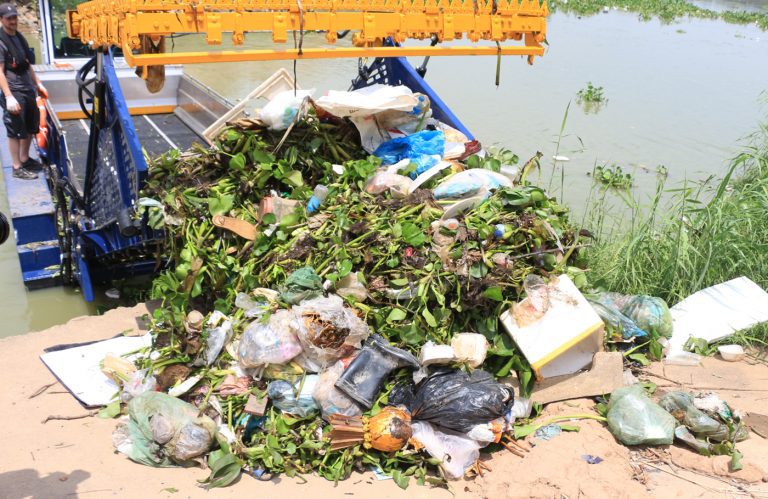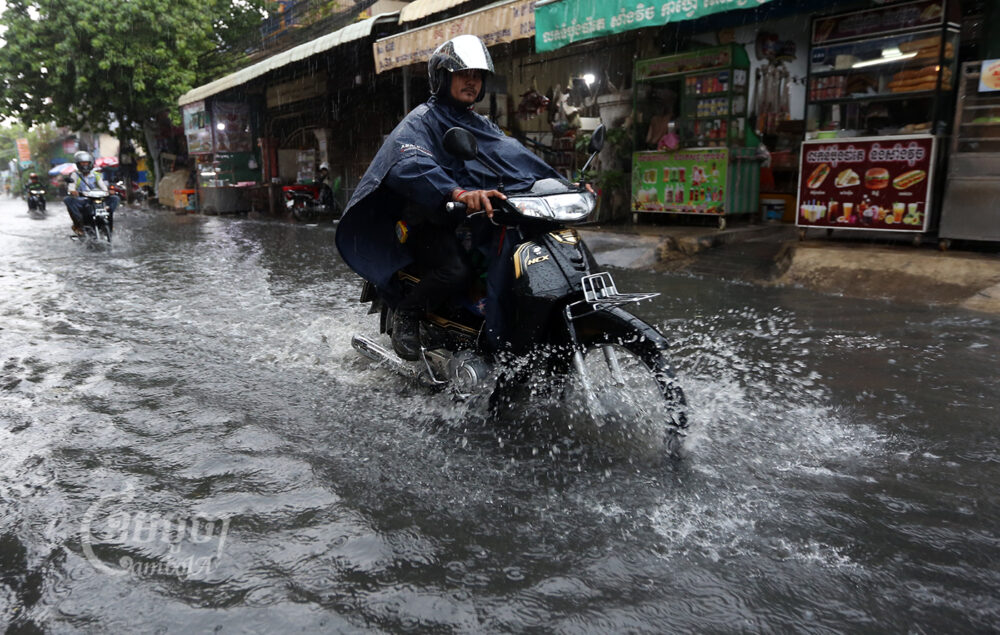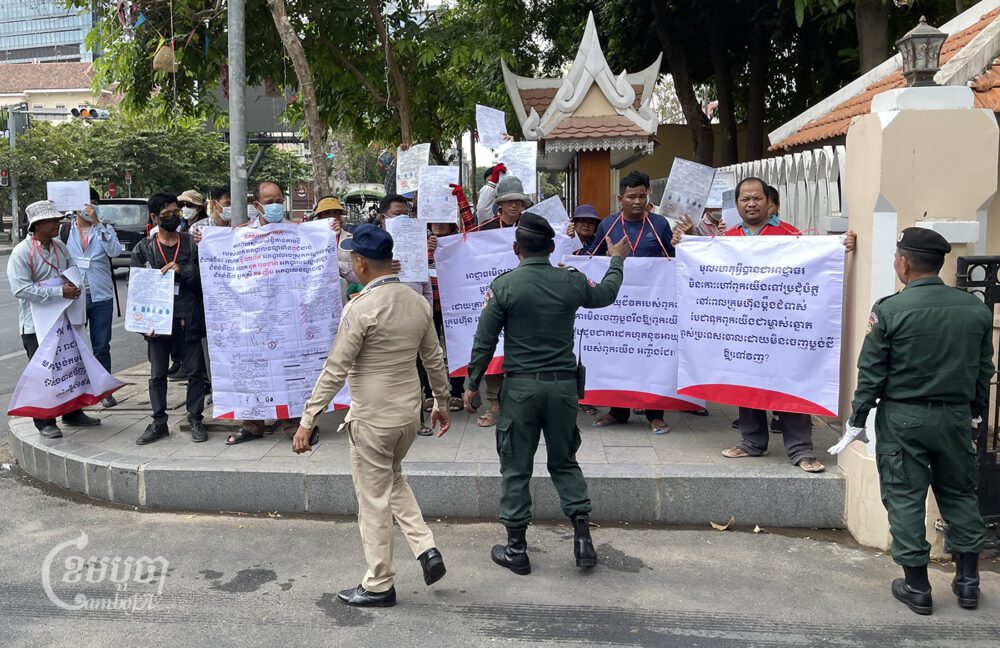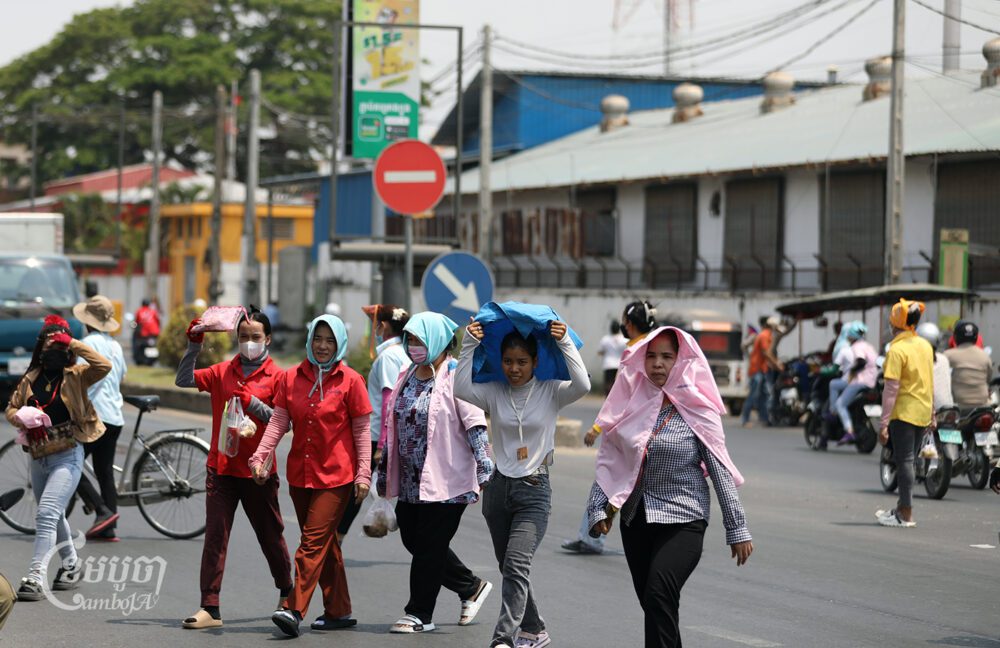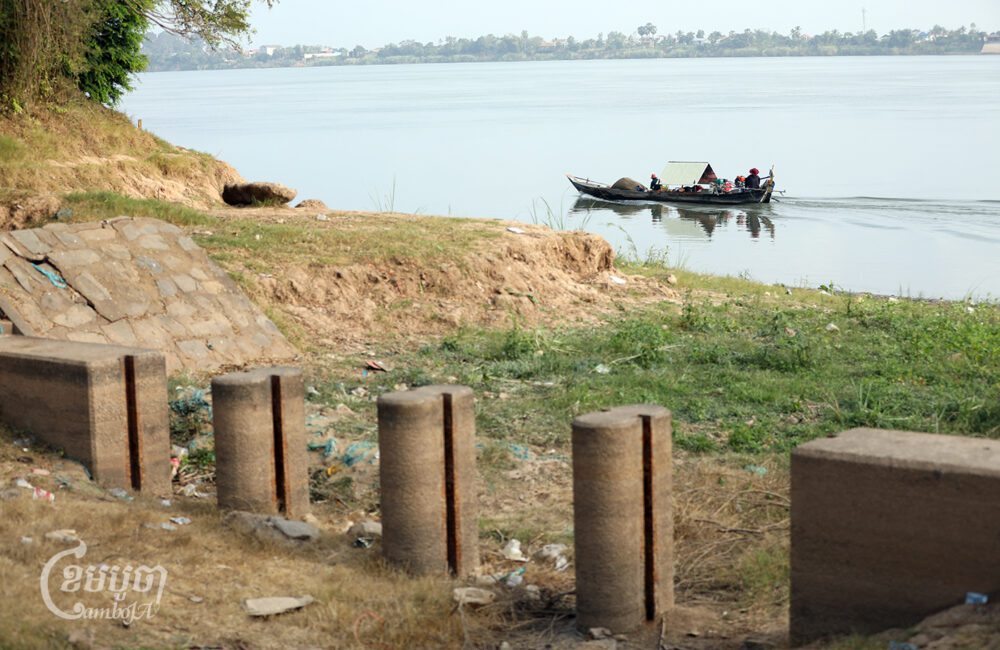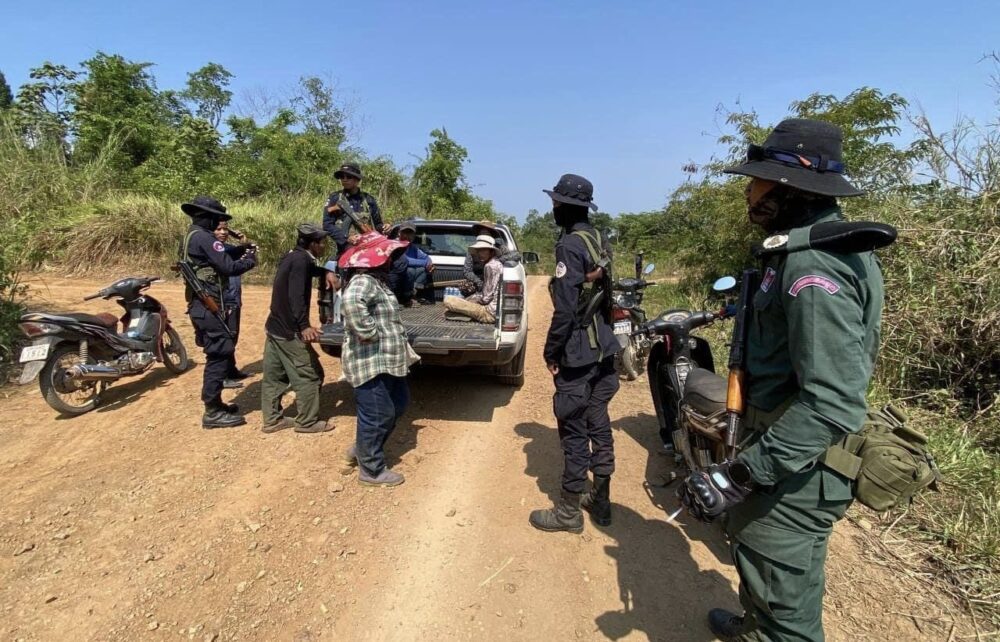The shores of the Tonle Sap River in Kandal province’s Ponhea Leu district are teeming with fisher people, and licensed sales agents, selling the daily catch. Waiting eagerly are scores of people who will buy the stock and turn it into the popular, and often pungent, fermented fish paste called “prahok.”
As boats arrive bringing in fresh catch, fishers are hard at work cleaning and gutting the fish. But, amid all the commotion, there is a tension that permeates the market.
“It is too expensive!” yells Leng Khem, who has come from Kampong Speu to buy fish that she will dry, salt and ferment before it turns into prahok.
Prahok season is in full swing and food manufacturers and small businesses are rushing to procure as much of the fish as possible, which is harvested from November to February. The harvest relies on the success of the monsoon and the reversing of water flows into the Tonle Sap.
Khem said she was able to buy a kilogram of the “riel” fish for no more than 3000 riel, or $0.75, last year. But, agents were asking for at least $1.25 to as much as $2.25 a kilogram this year, she said.
“I had money for 100 kilograms [of fish], but with these prices I can afford only 50 kilograms,” Khem said.
She said people have been camping at the docks waiting for the boats to bring fresh loads of fish, and hoping that prices would eventually even out and be more reasonable. A number of licensed fishers, called “dai” because they can use a specific kind of fishing net, procure the fish from fisher people, leaving prahok manufacturers with little option but to buy it at a price determined by the dai agent.
Fish prices have climbed sharply as catch numbers in the Tonle Sap have nosedived, much like the water levels in the critical waterbody. According to statistics from the Fisheries Action Coalition Team, the flooded mangrove areas of the Tonle Sap dropped from more than 634,000 hectares to about 300,000 hectares in the last 10 years.
Environmental NGOs and multilateral development bodies have been warning Cambodia and countries along the Mekong River over construction of large hydropower dams and its effect on fish catch, as well the adverse effects of climate change.
Agriculture and Fisheries Minister Veng Sakhon said the total freshwater fish this year would decline by 13 percent compared to last year.
The Fisheries Department estimates that that the fishes caught by “dai” owners, people licensed by the government to fish, will decline by 31 percent from 14,320 tons in 2019 to little more than 9,000 tons this prahok season.
Minister Sakhon denied the dropping fish catch was linked to hydropower dams – most of which are in China and Laos – but was instead because of climate change.
“Some people always link [low fish catch] to the construction of hydropower dams, and to floods and drought. They say flooding in Phnom Penh is because of the filling of lakes; they are crazy! They don’t look at the overall issue,” he said.

Om Savath, the executive director at Fisheries Action Coalition Team, said the decline in natural fisheries this year was a combination of several factors, including climate change, illegal fishing and hydro dam projects along the Mekong River.
“We worry about the decline in wild fish catch this year as hydropower dam development projects along the Mekong River, both upstream and downstream, has caused the Mekong River level to be lower,” he said.
He said the low Mekong levels had caused the Tonle Sap water levels to be stagnant at five meters, with riel fish requiring around eight to 10 meters depth to fully mature.
He said the government also needs to urgently address other issues, like illegal fishing, to protect the mangrove conservation areas in the Tonle Sap, which are a critical fish habitat.
Phon Chan, a 57-year-old vendor from Kambol district, Phnom Penh, said the current fish quality was not satisfactory, because they were too small for consumption.
“In the past, the fish were bigger and we had a lot of fish to eat, but now fish numbers are dropping as the Cambodian population [and demand] increases,” Phon Chan said.
According to a report from the Ministry of Agriculture, Forestry and Fisheries, released in October, freshwater fisheries yielded 250,000 tons of fish, down 965 tons from the same period last year. But there had been a 78 percent drop in exports and 94 percent reduction in fish processing.


